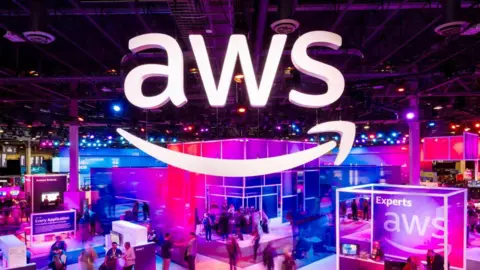Sci-Tech
Fake News Still Has a Home on Facebook

Stuart Thompson collected and analyzed data on thousands of Facebook posts for this article.
On the morning of Jan. 6, 2021, Christopher Blair’s fake news empire was humming along.
Mr. Blair had been earning as much as $15,000 in some months by posting false stories to Facebook about Democrats and the election, reaching millions of people each month.
But after a mob of Trump supporters attacked the U.S. Capitol, his growing enterprise came to an abrupt halt. Facebook seemed to recognize its own role in fomenting an insurrection and tweaked its algorithm to limit the spread of political content, fake and otherwise. Mr. Blair watched his engagement flatline.
“It just kind of crashed — anything political crashed for about six months,” he said.
Today, though, Mr. Blair has fully recovered, and then some. His false posts — which he insists are satire intended to mock conservatives — are receiving more interactions on Facebook than ever, surging to 7.2 million interactions already this year compared with one million in all of 2021.
Mr. Blair has survived Facebook’s tweaks by pivoting away from politicians and toward culture war topics like Hollywood elites and social justice issues.
When Robert De Niro appeared outside a Manhattan courthouse last month to criticize former President Donald J. Trump, for example, Mr. Blair dashed off a false post claiming that a conservative actor had called him “horrible” and “ungodly.” It received nearly 20,000 shares.
Many writers like him — who publish falsehoods to fringe websites and social media accounts in a bid for clicks that can translate into profitable ad revenue — have also leaned into culture war topics. So far this year, only a quarter of the Facebook content that was rated “false” by PolitiFact, a fact-checking website, focused on politics or politicians, with nearly half focusing on issues like transgender athletes, liberal celebrities or health alternatives.
The success of those posts underscores an increasing reality on Facebook and similar platforms: Fake news is still finding an audience online.
The pivot has been so successful that Mr. Blair has seen an array of competitors spring up, many also calling their posts “satire.” They have copied his content and used artificial intelligence tools to supercharge their work.
“After what happened on Jan. 6, there was some progress, and then almost immediately that progress was rolled back,” said Paul Barrett, deputy director of the NYU Stern Center for Business and Human Rights, who studies online disinformation. “I think we’re actually more vulnerable to this today than we were in spring of 2021.”
A spokeswoman for Meta, which owns Facebook, responded by highlighting the company’s misinformation policy and its efforts to combat falsehoods by limiting the spread of certain low-quality content.
Surviving on Facebook
Mr. Blair, a 52-year-old former construction foreman, is an avowed liberal.
He doesn’t see his work as fake news. He has long defended himself, including in profiles in The Washington Post and The Boston Globe, as a comedian who trolls conservative Facebook users into believing news that they should clearly question. He compares his work to that of Sacha Baron Cohen, the British comic who frequently dupes conservative Americans in an attempt to ridicule them. Mr. Blair uses a small “satire” label on each image he posts to Facebook.
But his headlines are often indistinguishable from many of the falsehoods that are posted to the social network.
Facebook allows satirical pages, whether or not they use a “satire” label. But the term has also become a popular defense for fake news operators, who typically disclose they are satire only in an obscure section of their Facebook pages, or sometimes omit it entirely.
“It’s a cat-and-mouse game,” said David Lazer, a professor at Northeastern University who has studied disinformation. “Wherever there’s a loophole in enforcement, it’s going to be a place that activity will go.”
Facebook’s attempts to limit the spread of political content left Mr. Blair and his contributors searching for a new approach.
“We used to kill Hillary Clinton every Saturday in the most ridiculous ways,” said Joe LaForm, a 48-year-old truck driver who identifies as a liberal and has contributed to Mr. Blair’s Facebook page. “You know, she’d get run over by a monster truck at a monster truck rally.”
“We stopped doing that,” he added, because of Facebook’s attempts to limit the spread of political content.
Mr. Blair now posts dozens of false stories to the social network each week on his main account, which has more than 320,000 followers and more than 225,000 likes. He populates his posts with a colorful cast of celebrities: actors like Tim Allen and Whoopi Goldberg or musicians like Jason Aldean and Kid Rock. He often stages them in dramatic but entirely fictitious feuds over culture war topics. A post from April, claiming that Beyoncé was criticized for “playing dress-up” by releasing country music, received more than 50,000 shares and 28,000 comments.
“If it’s somebody on the right, I reward them. If it’s somebody on the left, I punish them,” Mr. Blair said in a phone interview. “It’s my method.”
This was not the only pivot Mr. Blair had to make. After Facebook started down-ranking posts that linked to low-quality websites, Mr. Blair started posting only images and memes. Now, when a post seems to be a hit, he will add the link as the pinned comment.
“I know exactly what happened, in every situation, and why,” Mr. Blair said of the ups and downs of publishing on Facebook. “I’m constantly adjusting.”
Those pivots have rippled through the industry, with similar falsehoods appearing on Facebook pages with even larger audiences, like “Donald Trump Is My President,” which has more than 1.8 million followers. Some posts are shared directly to groups filled with conservatives, like fan pages for Tucker Carlson and Jesse Watters, two right-leaning anchors.
Many of the accounts have described themselves as news outlets. NewsGuard, a company that tracks online disinformation, identified 15 such accounts, with names like “Daily News” or “Breaking News USA,” that shared falsehoods about companies like Disney, Paramount, Nike and Tyson Foods.
“There are just tons and tons and tons of headlines being churned out every single day,” said Coalter Palmer, an analyst at NewsGuard who conducted the research. “It’s a lot of cultural war stuff.”
Competing Against A.I.
Today, Mr. Blair is facing stiffer competition from pages that use A.I. tools to write fake stories about the celebrities and culture war issues he has highlighted. NewsGuard has identified nearly 1,000 websites that use A.I. tools to write unreliable news articles, up from 138 one year ago.
That competition includes SpaceXMania, a competing network of Facebook pages with at least 890,000 followers.
“My material, my cast of characters, my keywords, my hot buttons — they take everything,” Mr. Blair said of the recent plagiarism. “They put it into an A.I. program, and it just spits out headlines. There’s nothing original about any of it.”
When Mr. Blair wrote a false story recently about Harrison Butker, a National Football League player who garnered national attention for his conservative views on women, SpaceXMania quickly followed suit with stories of its own about Mr. Butker — earning hundreds of thousands more comments than Mr. Blair.
The operator behind SpaceXMania is based in Pakistan and identifies himself by the name Shabayer, according to Facebook messages with Mr. Blair that he shared with The New York Times. He has cited Mr. Blair as a “role model” for his start-up, according to the messages.
“I’m a liberal troll social justice warrior serving satirical nonsense with a mission,” Mr. Blair said. “He’s selling fake news to American conservatives from Pakistan for profit.”
A representative for SpaceXMania initially responded to an email, but stopped responding after a reporter sent questions.
Many of SpaceXMania’s articles were written entirely by artificial intelligence tools like ChatGPT, according to a Times analysis that used software to detect A.I.-written text.
“He’s probably the most effective at using my stuff,” Mr. Blair said. “He’s trying to get away from the A.I., but he never will.”
Sci-Tech
Are rainy days ahead for cloud computing?

By Sean McManus, Technology reporter
 David Heinemeier Hansson
David Heinemeier HanssonThis year, software firm 37signals will see a profit boost of more than $1m (£790,000) from leaving the cloud.
“To be able to get that with such relatively modest changes to our business is astounding,” says co-owner and chief technology officer, David Heinemeier Hansson.
The US company has millions of users for its online project management and productivity software, including Basecamp and Hey.
Like many companies it outsourced data storage and computing to a third party firm, a so-called cloud services provider.
They own huge data centres, where they host data from other firms, which can be accessed over the internet.
In 2022, such services cost 37signals $3.2m.
“Seeing the bill on a weekly basis really radicalised me,” Mr Heinemeier Hansson says.
“I went: ‘Wait! What are we spending for a week of rentals?’ I could buy some really powerful computers just on one week’s worth of [cloud] spending.”
So, he did. Buying hardware and hosting it in a shared data centre costs $840,000 per year.
Although costs pushed Mr Heinemeier Hansson to act, other factors were also a concern.
The internet is engineered to be highly resilient.
“I saw the distributed design erode as more and more companies gravitated essentially to three owners of computers,” he says, referring to the three leading cloud providers.
If a major data centre goes down, large parts of the web can go offline.
The cloud was pitched, he says, as cheaper, easier, and faster. “The cloud was not able to make things easier to a point where we could measure any productivity gains,” he says, noting his operations team has always been about the same size.
Was using the cloud faster?
“Yes, but it didn’t matter,” says Mr Heinemeier Hansson.
“If you want to connect a hundred servers to the internet, you can do it in less than five minutes [in the cloud]. That’s incredible.
“But we do not need, nor do I believe the vast majority of companies need, a five-minute turnaround on a massive number of additional servers.”
He can have new servers delivered and racked in his data centre in a week, which is fast enough.
37signals does use the cloud for experimenting with new products. “We needed to have some big machines, but we only needed them for 20 minutes,” Mr Heinemeier Hansson says.
“The cloud is ideal for that. It would be wasteful to buy that computer and let it stay idle for 99.99% of the time.”
He still recommends the cloud to fledgling businesses. “When you have a speculative start-up and there’s great uncertainty as to whether you’re going to be around in 18 months, you should absolutely not spend your money buying computers,” he says. “You should rent them.”
 Getty Images
Getty Images37signals is not alone in bringing workloads back from the cloud, which is known as cloud repatriation.
Digital workspace company Citrix found that 94% of large US organisations it surveyed had worked on repatriating data or workloads from the cloud in the last three years.
The reasons cited included security concerns, unexpected costs, performance issues, compatibility problems and service downtime.
Plitch provides software that enables people to modify single-player games, including adjusting the difficulty.
It built its own private data centres and repatriated cloud workloads to them, saving an estimated 30% to 40% in costs after two years.
“A key factor in our decision was that we have highly proprietary R&D data and code that must remain strictly secure,” says Markus Schaal, managing director at the German firm.
“If our investments in features, patches, and games were leaked, it would be an advantage to our competitors. While the public cloud offers security features, we ultimately determined we needed outright control over our sensitive intellectual property.
“As our AI-assisted modelling tools advanced, we also required significantly more processing power that the cloud could not meet within budget.”
He adds: “We encountered occasional performance issues during heavy usage periods and limited customisation options through the cloud interface. Transitioning to a privately-owned infrastructure gave us full control over hardware purchasing, software installation, and networking optimized for our workloads.”
 Pulsant
PulsantMark Turner, chief commercial officer at Pulsant, helps companies to migrate from the cloud to Pulsant’s colocation data centres across the UK.
In a colocation arrangement the client owns the IT hardware, but houses it with another firm, where it can be kept securely, at the right temperature and with power back-up.
“The cloud is going to continue to be the biggest part of IT infrastructure, but there is a good place for local, physical, secure infrastructure,” he says. “There is a repatriation going on of the things that should never have been in the cloud or that won’t work in the cloud.”
Some his biggest clients for repatriation are online software providers, where each additional customer puts more load on the server, increasing cloud costs.
One such client is LinkPool, which enables smart contracting using blockchain. It was developed in public cloud, initially using free credits. Business exploded, and the cloud bill reached $1m per month. Using colocation, costs shrunk by up to 85%.
“[The founder has] now got four racks in a data centre in the city where he lives and works, connected to the world. He goes up against his competitors and he can move his price point around because his cost is not going to move in line [with customer demand],” says Mr Turner.
“The change leaders in the IT industry are now the people who are not saying cloud first, but are saying cloud when it fits,” he adds. “Five years ago, the change disruptors were cloud first, cloud first, cloud first.”
Of course, not everyone is repatriating. Cloud computing will remain an enormous business, with AWS, Microsoft’s Azure and Google Cloud Platform being the biggest players.
For firms like Expedia, they are essential.
It has used the cloud to consolidate 70 petabytes of travel data from its 21 brands.
Applications run in the cloud, too, except for legacy software that doesn’t work there yet.
“We are experts in travel,” says Rajesh Naidu, chief architect and senior vice president, Expedia. “[Cloud providers] are experts in running infrastructure. That’s one less thing for me to worry about while we focus on running our business.”
“One of the main things the cloud gives us is a global presence, the ability to deploy our solutions closer to the region that they need to be in,” he says.
“The other thing is the resiliency and the availability of the infrastructure. Cloud providers have designed and architected their infrastructure really well. We can ride on the coattails of their innovation.”
Expedia has a cloud centre of excellence, which saved about 10% on cloud costs last year.
“You’ve got to set policies because otherwise it’s easy for companies to run huge cloud costs,” Mr Naidu says. “You can turn things down when you don’t need them. If you consume [cloud resources] wisely, your bill won’t be a surprise at the end of the day.”
Sci-Tech
AT&T, Verizon and T-Mobile Users Hit by Service Outage in Europe

Many travelers from the United States lost a crucial tool to check maps, make reservations, use ride-hailing apps and more because of a cellular data outage that began affecting users of AT&T, T-Mobile and Verizon on Wednesday.
The affected travelers, mostly in Europe, posted on social media, seeking answers about what caused the outage and how long it would last. Some reported being unable to make phone calls, send texts or use online services without Wi-Fi for as long as 24 hours. It is unclear what caused the outage, which appeared to extend from Britain to Turkey.
An AT&T spokeswoman said that the carrier’s network was operating normally, but that some customers traveling internationally might be experiencing service disruptions because of an issue outside the AT&T network. The company said it was working with one of its roaming connectivity providers to resolve the issue.
Verizon told some of its customers on social media that it was also aware of the issue and that its teams were working with local providers to resolve it.
A T-Mobile representative said the carrier was one of “several providers impacted by a third-party vendor’s issue that is intermittently affecting some international roaming service” and was also working to resolve it.
George Lagos, a 70-year-old real estate developer from Dunedin, Fla., who is visiting the Greek island of Crete with his family, noticed yesterday that his T-Mobile cellular data was not working. For about 24 hours, he said, he was not able to reach the people he had made plans with, though luckily, they had already gone over the details together.
“You know it’s an inconvenience, but it wasn’t a disaster,” said Mr. Lagos, whose service appeared to be restored by Thursday evening. “I didn’t miss a flight. I didn’t have a taxicab looking for me or anything.”
But there was a more serious concern: His wife’s mother has been sick and Mr. Lagos’s wife could not reach the person who was helping take care of her.
“That probably was the worst thing,” Mr. Lagos said.
Major U.S. carriers all offer some version of an all-inclusive international data plan that allows travelers to use their phones much as they would in the United States.
Though the current disruption appears to be easing, travelers affected by such outages have other options to connect. Swapping out a physical SIM card — for phones that still have one — can allow you to connect to a local network. (These typically come in pay-as-you-go or prepaid packages.) For newer phones, apps like Airalo provide relatively inexpensive electronic SIM card packages in many international destinations. And of course, you can always seek out a secure Wi-Fi network.
Follow New York Times Travel on Instagram and sign up for our weekly Travel Dispatch newsletter to get expert tips on traveling smarter and inspiration for your next vacation. Dreaming up a future getaway or just armchair traveling? Check out our 52 Places to Go in 2024.
Sci-Tech
India seeks report on hiring practices of Apple supplier

The Indian government has sought a detailed report from Tamil Nadu state following media reports that Apple supplier Foxconn was allegedly rejecting married women for iPhone assembly jobs.
A Reuters investigation alleged that Foxconn had excluded married women from jobs at its main India iPhone plant near Chennai, citing their greater family responsibilities compared to unmarried women.
The federal labour ministry says the law “clearly stipulates that no discrimination (is) to be made while recruiting men and women workers”.
Neither Apple nor the Tamil Nadu state government responded to requests for comment from Reuters.
The BBC has also reached out to Foxconn and the Tamil Nadu labour department for a response.
Foxconn, the largest supplier of Apple iPhones, set up its first factory in Tamil Nadu in 2017 but has since been aggressively expanding its operations in India.
In 2023, it began assembling the iPhone 15 in the state and earlier this year, Foxconn tied up with Google to make Pixel smartphones in Tamil Nadu.
Rights activists say the reports about the firm’s hiring practices in India are concerning, given that thousands look to its factories for employment opportunities.
Reuters said it spoke to numerous employees and Foxconn hiring agencies for the story.
The report said that hiring agents and Foxconn HR sources “cited family duties, pregnancy and higher absenteeism as reasons why Foxconn did not hire married women at the plant”.
This isn’t the first time the firm has come under the scanner for its labour practices.
In 2018, a US-based rights group had accused the firm of overworking and underpaying temporary workers at its factory in China that manufactured products for Amazon.
In 2022, its iPhone factory in China saw protests by workers who claimed that they had not been paid certain dues.
-

 African History5 years ago
African History5 years agoA Closer Look: Afro-Mexicans 🇲🇽
-

 African History5 months ago
African History5 months agoBlack History Facts I had to Learn on My Own pt.6 📜
-

 African History5 years ago
African History5 years agoA Closer Look: Afro-Mexicans 🇲🇽
-

 African History1 year ago
African History1 year agoMajor African Tribes taken away during the Atlantic Slave Trade🌍 #slavetrade #africanamericanhistory
-

 African History1 year ago
African History1 year agoCameroon 🇨🇲 World Cup History (1962-2022) #football #realmadrid #shorts
-

 African History1 year ago
African History1 year agoPROOF AFRICAN AMERICANS AIN'T FROM AFRICA DOCUMENTED EVIDENCE
-

 African History4 months ago
African History4 months agoMr Incredible Becoming Canny/Uncanny Mapping (You live in Paraguay 🇵🇾)
-

 African History5 months ago
African History5 months agoBlack History Inventors: Mary Kenner 🩸


























